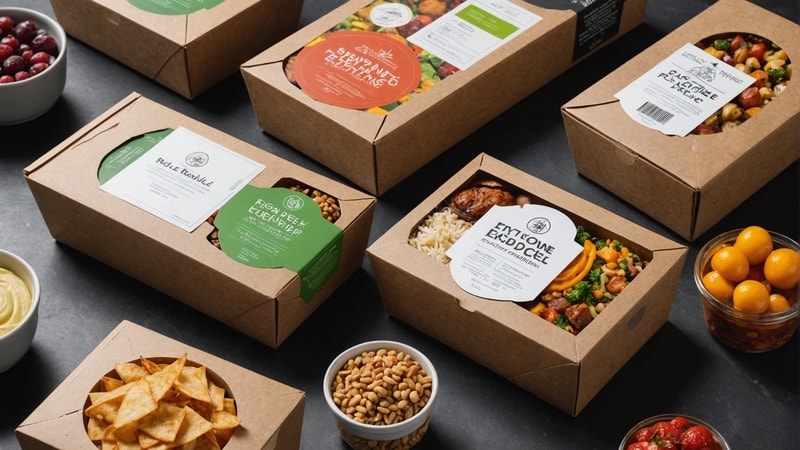With global food supply chains spanning multiple regions and industries, food security has become a pressing issue. Ensuring that food remains safe, unaltered, and accessible is essential for public health and economic stability. Without proper safeguards, food products are vulnerable to tampering, counterfeiting, and contamination, putting consumers at risk.
Tamper-evident solutions offer a practical way to enhance food safety by preventing unauthorized access and providing visible signs of interference. In this article, we will discuss the role of tamper-evident solutions, such as specialized seals, labels, and packaging innovations, to ensure that food remains safe from production to consumption.
What is Food Security & Challenges in Food Security

Food security means having consistent and adequate food access to enough food for an active and healthy life. It relies on four key pillars: availability (sufficient food supply), access (affordability and distribution), utilization (proper nutrition and food safety), and stability (continuous access despite crises). When any of these pillars are compromised, food insecurity arises, affecting millions worldwide.
Several challenges threaten food security today, including:
- Climate Change: Rising temperatures, droughts, and extreme weather events disrupt food production.
- Supply Chain Disruptions: Trade restrictions, conflicts, and transportation delays impact food distribution.
- Food Waste & Loss: Poor storage, inefficient and complex supply chains, and overconsumption lead to significant food waste.
- Food Fraud & Safety Concerns: Contamination and counterfeit food products threaten public health.
Addressing these issues requires innovative solutions such as sustainable agricultural productivity, stronger food policies, and advanced tamper-evident packaging solutions to protect food from contamination and fraud, ensuring a safer and more secure food supply.
Importance of Tamper-Evident Packaging for Food and Beverage Security
Tamper-evident packaging plays a crucial role in bolstering food and beverage security, addressing several of the challenges outlined above. Its primary function is to provide a visible indication of unauthorized access or tampering, offering consumers and businesses a critical layer of protection.
This visual deterrent acts as a first line of defense against contamination, substitution, or theft, significantly reducing the risk of food fraud and ensuring product integrity. By incorporating tamper-evident features, manufacturers can build consumer trust and confidence in the safety and authenticity of their products.
The clear indication of tampering allows consumers to quickly identify compromised items, preventing the consumption of potentially harmful or fraudulent goods. This heightened security also protects businesses from liability issues and reputational damage associated with food safety incidents.
Furthermore, tamper-evident packaging can contribute to reducing food waste by ensuring that products remain sealed and protected during transportation and storage, maintaining their quality, and extending their shelf life. The use of such packaging demonstrates a commitment to food safety and enhances brand credibility, fostering stronger consumer relationships.
Types of Tamper-Evident Solutions in the Food and Beverage Industry
Tamper-Evident Labels
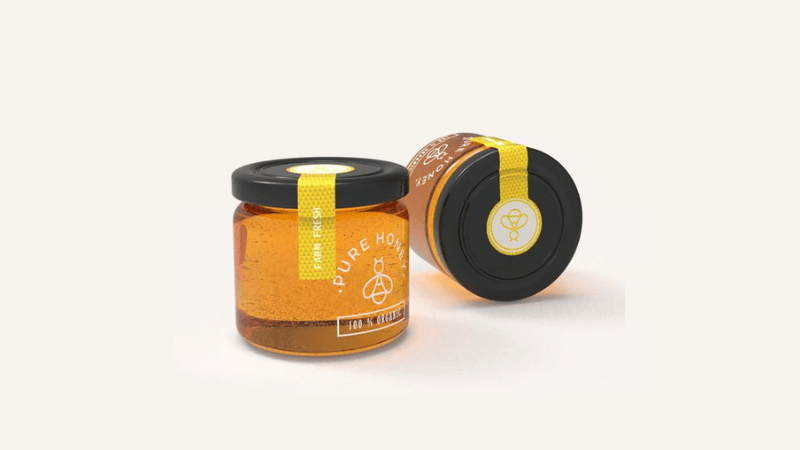
Tamper-evident labels, or security labels, are a widely used tamper-evident solution in the food systems and beverage industry. These specialized labels are designed to show clear signs of tampering through permanent discoloration, text appearance, or destruction when removal is attempted.
When applied to packaging, these labels create an additional layer to secure food by making unauthorized access immediately visible to consumers and retailers. The following are the different types of tamper-evident labels:
- Void Labels: Leave a void or pattern behind when removed, indicating tampering.
- Destructible Labels: Made from materials that break or fragment when peeled, ensuring the label cannot be reused.
- Tamper-Evident Stickers: Designed with unique features like holographic effects or UV ink that distort if tampered with.
In the food and beverage sector, tamper-evident labels are commonly used on bottled beverages, such as sealing caps on water, juice, or soda bottles. They are also applied to food jars and cans, ensuring the integrity of products like jam, honey, and sauces.
One of the key benefits of tamper-evident labels is their ease of application to existing packaging lines, making them a seamless addition to food production and distribution processes. They also offer a cost-effective way to enhance product security, helping brands maintain consumer trust.
Tamper-Evident Seals
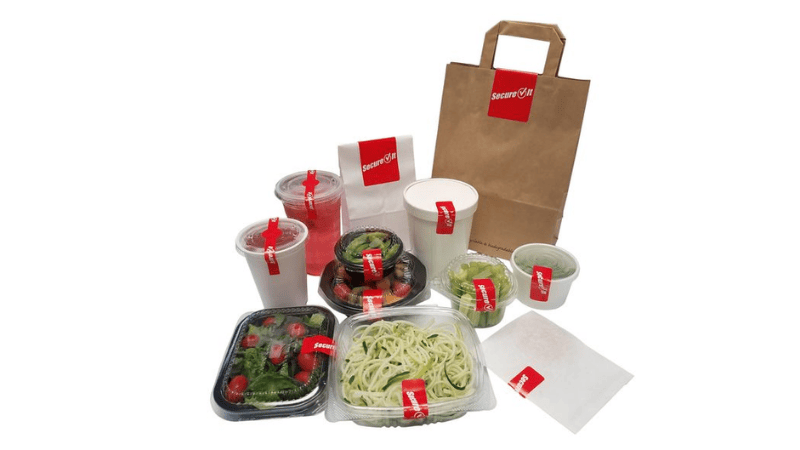
Tamper-evident seals, or security seals, offer a more secure closure than labels alone. These seals, often made from a thin, flexible material, are placed over the opening of a container or package. Upon any attempt to open the container, the seal breaks or tears, leaving visible evidence of tampering.
Once broken, these seals cannot be reattached or replicated, making them ideal for containers, bottles, and boxes. They often incorporate features like serrated edges or perforations that fragment upon tampering attempts.
The following are the different types of tamper-evident seals:
- Plastic Seals: Used for closing bottles, drums, and other rigid containers; they break or distort when removed.
- Metal Seals: Commonly used in food manufacturing to preserve freshness and security in items such as canned foods or vacuum-sealed packaging.
- Security Seals with Serial Numbers: These seals include unique identifiers or barcodes that make it easy to track and identify tampered goods.
Tamper-evident seals are commonly applied to alcoholic beverages, such as wine and liquor bottles, to prevent unauthorized opening before purchase. These seals are also used for cans or sealed pouches of processed food, ensuring that any breach is immediately noticeable.
One of the main advantages of tamper-evident seals is their ability to provide stronger protection for high-value or high-risk products. They are particularly effective for large-scale, commercial food packaging—helping manufacturers maintain quality and consumer trust!
Tamper-Evident Bags

Tamper-evident bags are a packaging solution that inherently provides tamper evidence. These bags feature seals, zippers, or adhesives that are visibly altered when disturbed, making unauthorized access immediately noticeable.
The following are the different types of tamper-evident bags:
- Plastic Tamper-Evident Bags: Feature secure zippers or adhesive closures, often used for retail food packaging or bulk food shipping.
- Tamper-Evident Mylar Bags: Commonly used for packaging dry foods like spices or coffee, these bags provide additional protection against moisture and air.
- Tamper-Evident Pouches: Designed for high-end or specialty products such as snack packs, single-serve beverages, or supplements.
Tamper-evident bags are widely used in the food and beverage sector for ready-to-eat meals and delivery items to ensure that food products remain fresh and untouched until they reach consumers. Additionally, bulk ingredient packaging, such as flour, sugar, or salt for restaurants and warehouses, benefits from tamper-evident designs to prevent unauthorized access.
The key benefits of tamper-evident bags include preventing unauthorized access during transit or storage, protecting product freshness, and reducing the risk of contamination. They are a cost-effective and reliable solution for businesses looking to enhance product security, particularly in single-serve food packaging and delivery services.
Tamper-Evident Tape
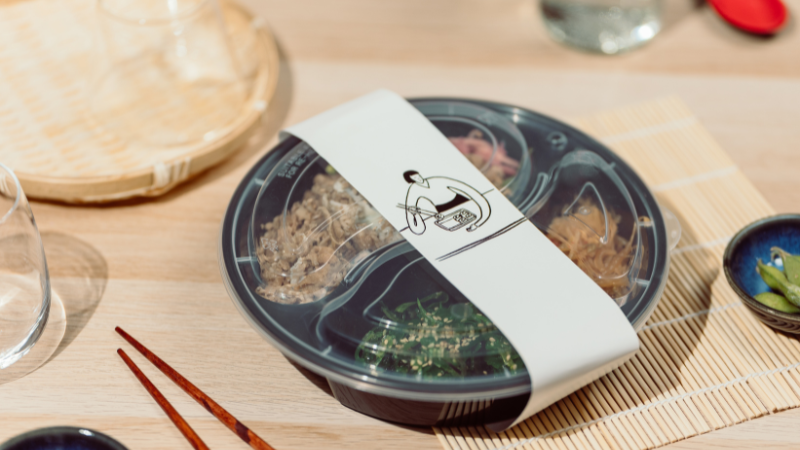
Tamper-evident tape, or security tape, offers a simple yet effective way to secure packages and indicate tampering. This tape is designed to leave a visible residue or imprint upon removal, making it clear if the package has been opened or compromised.
The tape’s adhesive properties are crucial to its effectiveness, ensuring that any attempt to remove it leaves behind clear evidence. It’s often used in conjunction with other tamper-evident solutions for added security.
The following are the different types of tamper-evident tape:
- Security Tapes: Designed for sealing boxes or shipping containers, these tapes make it easy to detect unauthorized access.
- Fragile Tapes: Marked with warnings like “Fragile” or “Do Not Open,” these tapes break or distort when tampered with.
- Void Tape: Leaves a visible “void” message on the package once removed, indicating that the seal has been broken.
Tamper-evident tape is commonly applied to shipping boxes containing bottled beverages, packaged dry goods, and bulk food items, ensuring they remain intact during transit. Many food manufacturers and retailers also use it to secure external packaging in warehouses or storage facilities, reducing the risk of tampering before products reach consumers.
One of the main advantages of tamper-evident tape is its simplicity. It can be easily integrated into packaging and shipping processes without requiring additional equipment or complex modifications. In the food delivery industry, tamper-evident tape is an essential security measure for sealing takeout containers and meal delivery kits, providing customers with visible assurance that their food has not been opened or altered.
Tamper-Evident Caps and Closures
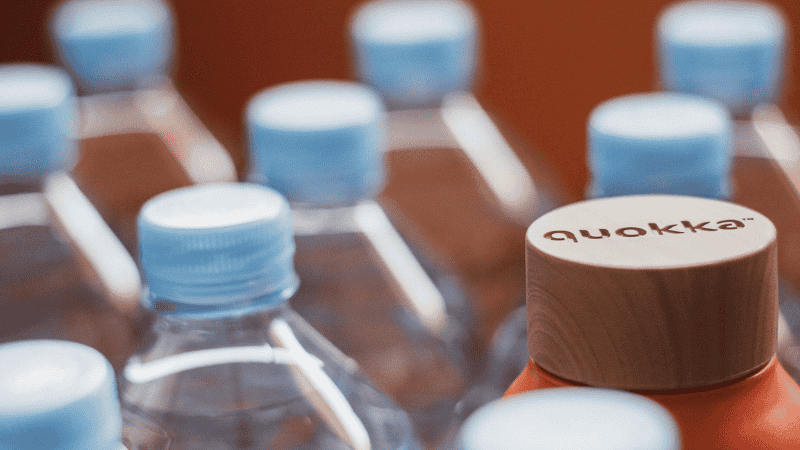
Tamper-evident caps and closures are specifically designed for bottles, jars, and other containers with screw-on or press-on lids. These closures often feature a tamper-evident band or seal that breaks or distorts upon opening. They help prevent unauthorized access and provide assurance that the product inside has not been altered before purchase.
The following are the different types of tamper-evident caps:
- Induction Seals: Common in the food industry for products like juices, sauces, and bottled beverages, these seals create a vacuum-tight closure and leave behind visible signs of tampering.
- Breakaway Caps: Often used in beverage bottles, these caps break or leave a visible imprint when the seal is disturbed, ensuring that unauthorized access is noticeable.
- Shrink Bands: Found on bottles and jars, these plastic seals shrink tightly around the neck of the container, making it clear if the product has been opened.
Tamper-evident caps and closures are used for securing bottled drinks such as carbonated beverages, juices, and bottled water. They are also commonly used for sealing jars of preserves, sauces, and jams, ensuring that the contents remain fresh and uncontaminated.
The implementation of tamper-evident caps and closures in food packaging offers substantial benefits for both manufacturers and consumers. They provide consumers with confidence in product integrity while offering convenient resealing options for multiple-use items. They also help reduce product waste and extend shelf life by ensuring proper sealing between uses.

How to Choose the Right Tamper-Evident Solution for Your Product
Selecting the right tamper-evident packaging depends on several factors, including the type of product, its shelf-life, storage conditions, and shipping requirements. Perishable goods may require airtight seals, while high-value products benefit from security tapes or serialized labels for added traceability.
Different tamper-evident solutions offer varying levels of effectiveness depending on the product. For example, security seals are ideal for liquids to prevent leaks, while tamper-evident tape is better suited for bulk shipments. Companies must compare the options based on the risks their products face, ensuring that the chosen solution aligns with safety and regulatory standards.
Cost is another important consideration when selecting tamper-evident packaging. Businesses need to find a balance between effectiveness and budget, opting for solutions that provide strong protection without significantly increasing production costs. Bulk purchasing, supplier partnerships, and automated application methods can help manage costs while maintaining security.
Here is a comparison of various tamper-evident solutions based on product needs:
| | Induction Seals | Tamper-Evident Tape | Security Labels | Breakaway Caps | Shrink Bands |
|---|---|---|---|---|---|
| Best For | Liquids, sauces, beverages | Shipping boxes, bulk goods | High-value products, electronics | Bottled drinks, medicine | Jars, bottles, food containers |
| Tamper Evidence | Leaves a broken seal | Void message or residue | Void text or holograms | Cap breaks when opened | Seal shrinks and distorts |
| Application | Automated sealing | Manual or automated application | Manual application | Automated bottling lines | Heat shrink application |
| Cost Efficiency | Medium | Low | Medium-High | Medium | Low-Medium |
Choosing the right tamper-evident solution requires careful evaluation of product needs, cost-effectiveness, and security requirements. By understanding the strengths of different options, businesses can enhance consumer trust and ensure product integrity.
Best Practices for Implementing Tamper-Evident Packaging in Food and Beverage
Integrate Tamper-Evident Packaging into Existing Lines

The successful implementation of tamper-evident solutions demands a strategic approach that begins with a comprehensive assessment of current production lines and workflows. This evaluation helps identify the most suitable tamper-evident solutions that can seamlessly integrate into existing operations.
Once the appropriate security measures are selected—such as tamper-evident seals, labels, or security tapes—businesses should conduct small-scale trials before full implementation. Testing ensures that the new security features do not disrupt efficiency or compromise packaging quality.
Train Staff for Effective Implementation
Companies should also develop comprehensive training programs that cover both the technical aspects of applying tamper-evident features and the importance of maintaining package integrity. Ensure all staff understand proper handling procedures and can identify signs of tampering or application issues.
To maintain effectiveness, training should be an ongoing process rather than a one-time event. Regular workshops, hands-on demonstrations, and refresher courses keep employees informed about new security technologies and industry regulations.
Monitor and Audit for Compliance
Continuous monitoring and auditing are crucial for verifying the effectiveness of tamper-evident packaging solutions. Businesses should implement routine inspections to check the integrity of security features and ensure compliance with industry standards.
These inspections should include spot-checking packaging lines, reviewing packaging materials, and assessing whether tamper-evident elements remain intact throughout distribution.

Ensure Quality Through Supplier Collaboration
Finally, partnering with reliable suppliers is key to maintaining the quality and consistency of tamper-evident packaging. Businesses should work with trusted manufacturers that provide high-quality security labels, seals, and packaging materials that meet regulatory standards.
Besides, you need to know that maintaining an open line of communication with suppliers fosters collaboration and continuous improvement. A strong supplier partnership ultimately enhances product protection and reinforces food safety measures.
Future Trends in Tamper-Evident Packaging for Food and Beverage
Innovations in tamper technologies continue to evolve, incorporating advanced materials and design enhancements. Features like color-changing seals, RFID tracking, and blockchain integration are improving security and traceability, ensuring greater protection against tampering and counterfeiting.
Automation and smart packaging are also playing a significant role in enhancing tamper-evident solutions. Automated labeling and sealing processes reduce human error, while QR codes and NFC-enabled packaging allow consumers and businesses to verify the authenticity and track supply chain movements in real-time.
Sustainability is becoming a key focus in tamper-evident packaging, with companies shifting towards eco-friendly materials and biodegradable security seals. Brands are integrating recyclable and reusable options to align with environmental regulations while maintaining product integrity and consumer trust.

FAQs
Can tamper-evident packaging be used for all types of food and beverage products?
Yes, tamper-evident solutions are available for various products, including liquids, dry goods, and perishables.
How do tamper-evident labels differ from tamper-evident seals?
Labels leave visible marks or messages when removed, while seals physically break or distort when tampered with.
Are tamper-evident solutions required by law for food packaging?
Regulations vary by region, but many countries require them for certain food and beverage products to ensure safety.
Conclusion
Tamper-evident solutions play a vital role in ensuring food security. By adopting these advanced security measures, food manufacturers, distributors, and retailers can reinforce consumer confidence while protecting their brand reputation. Investing in high-quality, tamper-evident solutions is not just a safety measure—it’s a commitment to delivering secure, untainted products to the market.
Customizable Tamper-Evident Solutions!
Shosky Security offers high-quality, customizable, tamper-evident solutions to enhance food safety and product integrity. Whether you need security labels, seals, or packaging innovations, we provide tailored solutions to meet your industry’s needs. Contact us for more details.
